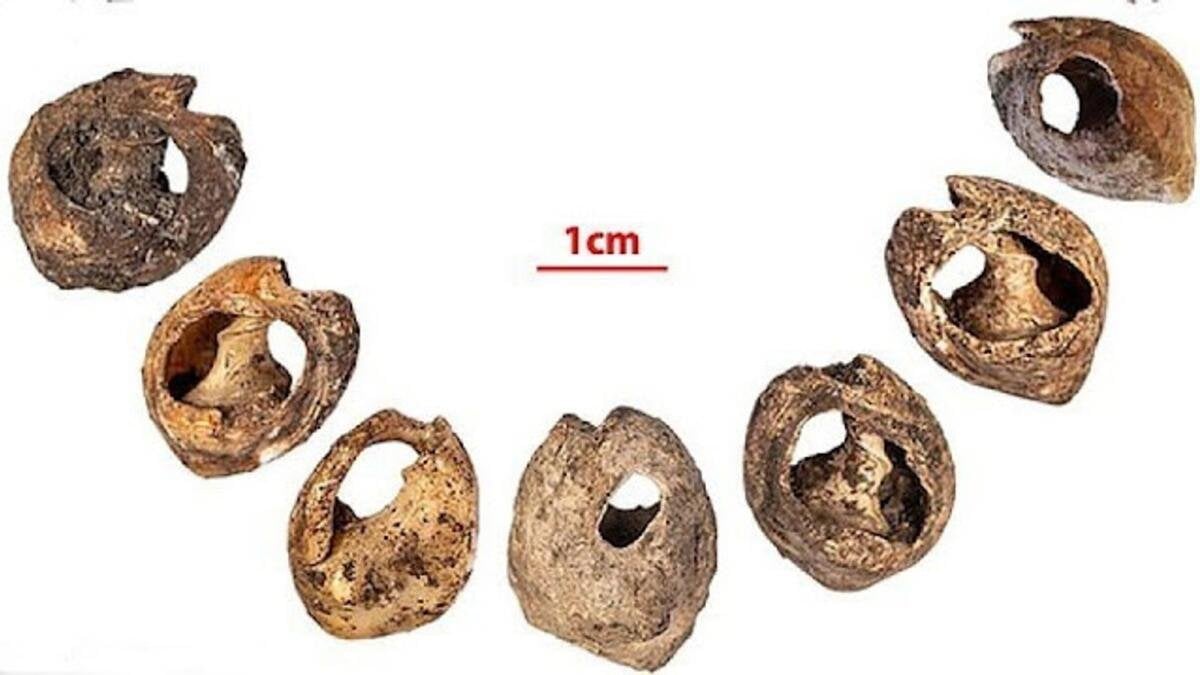
In a cave in the western Morocco desert, archaeologists have discovered the world’s oldest jewelry: a set of shell beads dated from 142,000 and 150,000 years ago.
Made from half-inch-long sea snail shells, the 33 beads turned up during excavations conducted between 2014 and 2018 near the mouth of Bizmoune Cave, about 10 miles inland from the coastal city of Essaouira.
Surveyors first found the cave in 2004, and initial excavations had been conducted in 2008 and 2009. The team behind the discovery published their findings earlier this fall in the journal Science Advances.
“[The beads] were probably part of the way people expressed their identity with their clothing,” Steven L. Kuhn, a professor of anthropology in the University of Arizona and one of the paper’s authors, said in a statement. “They’re the tip of the iceberg for that kind of human trait. They show that it was present even hundreds of thousands of years ago, and that humans were interested in communicating to bigger groups of people than their immediate friends and family.”
An international team of archaeologists recovered the 33 beads, between 2014 and 2018, from a cave in western Morocco. Photo by Steven L. Kuhn, courtesy of the University of Arizona.
The archaeologists used uranium-series dating, which measure the radioactive decay of uranium, to test the age of the beads and the surrounding layers of ash and sediment. The beads come from two sea snail species: the Columbella rustica, from the dove snail family, and Tritia gibbosula, commonly called the swollen nassa.
Each bead had a hole drilled through it, presumably so the ornaments could be hung on strings or clothing, possibly worn as earrings or a necklace. Many have smoothed, polished edges, suggesting the intentional work of a craftsperson. They are similar to other finds on the African continent, but the earliest examples had previously been just 130,000 years old.
“We don’t know what they meant,” Kuhn added, “but they’re clearly symbolic objects that were deployed in a way that other people could see them.”